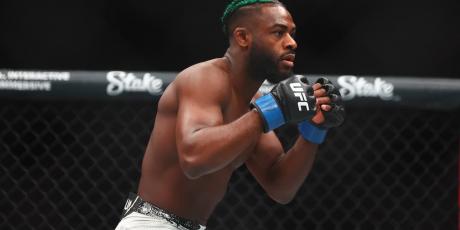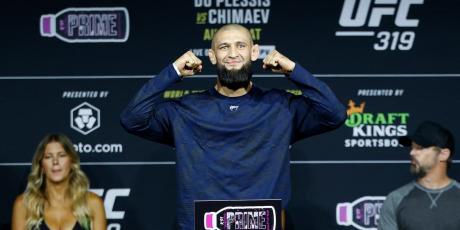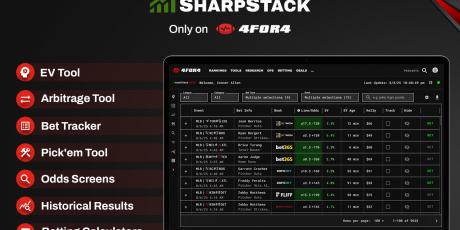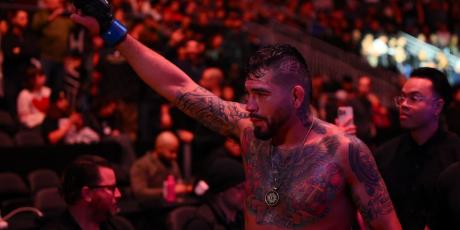2022 Sentry Tournament of Champions Round 2 Betting & Showdown Picks

As the sun set beyond the reaches of Makaluapuna Point on Maui's northwest coast, it was just another day in paradise and just another ultra-low scoring round for the majority of the 38-player field at Kapalua's Plantation Course. The field averaged a staggering 3.4 shots under par, and there were only four players who did not shoot in the red. Cameron Smith was even-par through his first four holes, but he caught fire starting with an eagle on the fifth hole. He ended up blazing his way to an 8-under 65 and a one-shot lead in the opening round of the Sentry Tournament of Champions. He did most of his damage with his putter, gaining 3.4 strokes on the greens. Behind Smith is the world-class trio of Daniel Berger, Jon Rahm and Patrick Cantlay, each at 7-under. Berger's ball-striking was superb, gaining 2.4 strokes on the field. As for Rahm and Cantlay, neither showed any signs of rust after long layoffs. Rahm's all-around game was sparkling as he was the only player to gain at least 0.5 strokes in each of the Strokes Gained metrics.
With breezes even slightly calmer on Friday, we should see more of the same low-scoring golf that is typical at Kapalua. Rahm is the current favorite at +430, followed by Smith and Cantlay at +550. As for value on the current board, if Bryson DeChambeau can dial in his wedge game he is definitely in play at +2000. But the value I like the most is Kevin Na at +3500 on DraftKings. Considering the course's length, the fit does not appear to be a great one, but Na was striping flagsticks on Thursday, finishing second in the field in SG: Approach. He is worth watching.
For those of you new to these in-tournament round articles, a few months ago I introduced a data-based model to better help analyze the myriad of betting matchups books put out between rounds. I post it on the Discord channel each night after the Thursday-Saturday rounds are completed. I will also use it for my analysis when making picks here in this article. The model also has a DFS DraftKings Showdown sheet as well. And yes, for the first time, below the betting section you will see a brief DFS section with my best plays for the Showdown slate. For both the betting and DFS sheets, the Strokes Gained Rating (SG RTG) is the key metric used to predict performance based on the raw data from the previous round(s) and a few other splits. For a more complete explanation of the categories in the datasheet, please reference the section below. Remember, while the data should be your guide, don't be a slave to it. Research, research, and do more research, but don't forget common sense. The more you can learn about each golfer, their trends, the course, etc., the more confidence you will have in your selections. It's going to be a fun year!
Jump To: Betting Picks | Showdown Picks
Strokes Gained Rating and Datasheet
While performance in golf can be volatile from round to round, the chart below was created to show a snapshot of how players have been performing in two of the most important categories related to predicting success, strokes gained (SG) ball-striking (BS) and putting (P). Ball-striking is a combination of a player’s off-the-tee (OTT) and approach (APP) performance. The chart also includes a few other important rankings, including a section of past historical scoring by each player during past “second” rounds.
Moving from left to right, the first section of the chart simply shows each players’ current overall score, and their SG Rating (which I will cover below). The DraftKings Showdown view will have their salary as well. Also included is their pre-tournament ranking (from my model), which gives a strong baseline to consider who has the overall talent, form and course-fit advantage. As we move to the “Ball-Striking” section, this area shows how many strokes were gained (or lost) during the first round. How a player is currently hitting the ball off-the-tee and on-approach shots show the true quality of performance and has much greater predictive value than any other statistic. Those of you who golf can attest to this point—ball-striking success breeds confidence. When you are striping it with the driver and with your irons it can feel like a birdie (or par) is possible on every hole—which leads us to the other SG category of vital importance relative to performance, putting.
The SG: Putting section details both round and cumulative putting performance from the current tournament. The really neat column in this section is the “Base – Event SG: P”. What this average depicts is each players’ baseline putting average over the last four years on the current tournament-specific grass. With this Sentry Tournament of Champions event being played on pure Bermuda greens, the "Bermuda Base SG: P AVG" shows how each player has performed on pure Bermuda greens since 2018. The “Base – Event SG: P” subtracts how they have putted thus far in the tournament from their baseline average. A positive “green” color means a player has putted below their baseline and has a likely chance of improving their putting in the next round. Likewise, a negative “red “ color means the player has putted above their typical average and is due for regression back towards their baseline average. This is a huge tool for analyzing potential performance for the next round. I have also included my pre-tournament putting rank for each player.
The “BS – P” section takes the player’s ball-striking number and subtracts from it their current putting number. Similar to the last section, this will show who has been relying on their putting (which is much less predictive), compared to who is hot with their ball-striking but also struggling with the putter. Again, “green” is positive and “red” is negative. Another neat thing is to contrast the “BS – P” differences between players. The higher the difference, the bigger the advantage for one player over the other.
The final section shows each players’ historical SG average over different periods of time (last 12 months, last 50 rounds, % of rounds gained over the last 24 rounds). Some might believe that how a player performs in the first or the third round, for example, does not really mean anything. I disagree. While I would not heavily weigh it compared to the other categories, golf is a game of habits and patterns. Some players do have success or struggle during certain rounds for whatever reason. For example, Cameron Tringale is a prolific first-round scorer, averaging 1.9 strokes gained over his last 50 first rounds. In rounds 2-4, he only averages 0.9 SG per round. Another interesting case study is Louis Oosthuizen. In the first three rounds of a tournament, he is gaining 1.8 shots on the field. But in round four, he gains only 0.5 shots.
The “SG Rating” is a work in progress, but in the attempt to narrow down all the data on this chart into one number, that is the column to focus on. It is a weighted combination of each of the important columns from each section of the chart. There are definitely other variables to consider including player fatigue, salary and finish position points (for Round 4 of Showdown), which are not baked into the chart yet. But in short, according to the raw data and other rankings, those are the best players to bet for matchups and to build your player pool around for the Showdown slate.
Round 2 Betting Selections
*Betting lines accurate at the time of publication.
Justin Thomas (-140) Over Patrick Reed

If you were on the Discord channel last night, I posted this for -119 at PointsBet, but it has since increased everywhere. I had high expectations for Patrick Reed this week but he looked awful in the first round losing more strokes off the tee than any round in his career. And that is really hard to do at a wide-open course like Kapalua. In actuality, the ball-striking numbers from both players were a mess. One of the big keys for me, however, is I have full confidence Justin Thomas turns it around on Friday. I have zero confidence Patrick Reed will. Thomas's putting was so bad—losing 2.4 strokes—it is bound to rebound, along with his ball-striking. Thomas is also, historically, one of the best second-round players in the field. With such a great pedigree here at this course, I am willing to lay the juice at these odds.
Billy Horschel (-112) Over Kyoung-hoon Lee

Yesterday, K.H. Lee completed his first-ever round on the Plantation at Kapalua course. Billy Horschel has played 21 career rounds here. One point that has been made time and time again about this course is that the more experience you have here, the more of an advantage. Both players struggled yesterday, but Horschel was surprisingly off with his putter, losing 1.2 strokes. He is one of the best Bermuda putters in the field. On the flip side, Lee outperformed his typical Bermuda putting by 0.64 strokes. Horschel also has a huge edge in historical second-round scoring, and honestly, he is a much better golfer overall.
Honorable Mention: Kevin Na (-101) Over Erik van Rooyen — Risk: 1.01 Units on PointsBet.
DraftKings DFS Showdown Selections



Core Plays
- Bryson DeChambeau, $9,600
- Sungjae Im, $8,300
- Kevin Na, $6,900
Top-Tier Plays
- Collin Morikawa, $10,700
- Viktor Hovland, $10,100
Mid-Tier Plays
- Justin Spieth, $9,200
- Sam Burns, $8,700
- Tony Finau, $8,000
Value Plays
- Harris English, $7,300
- Branden Grace, $6,400
- Stewart Cink, $6,100
- Lucas Glover, $6,000
For the most up-to-date picks, or if you have any questions or comments, check out my Twitter and subscribe to our Discord. This sheet from Dan Rivera tracks all my betting picks (and those from the rest of the betting staff) on the year. Just click on the tab with my name on it for the results.
This article is intended for entertainment purposes and adult users only. Call 1-800-GAMBLER if you have a gambling problem.
















